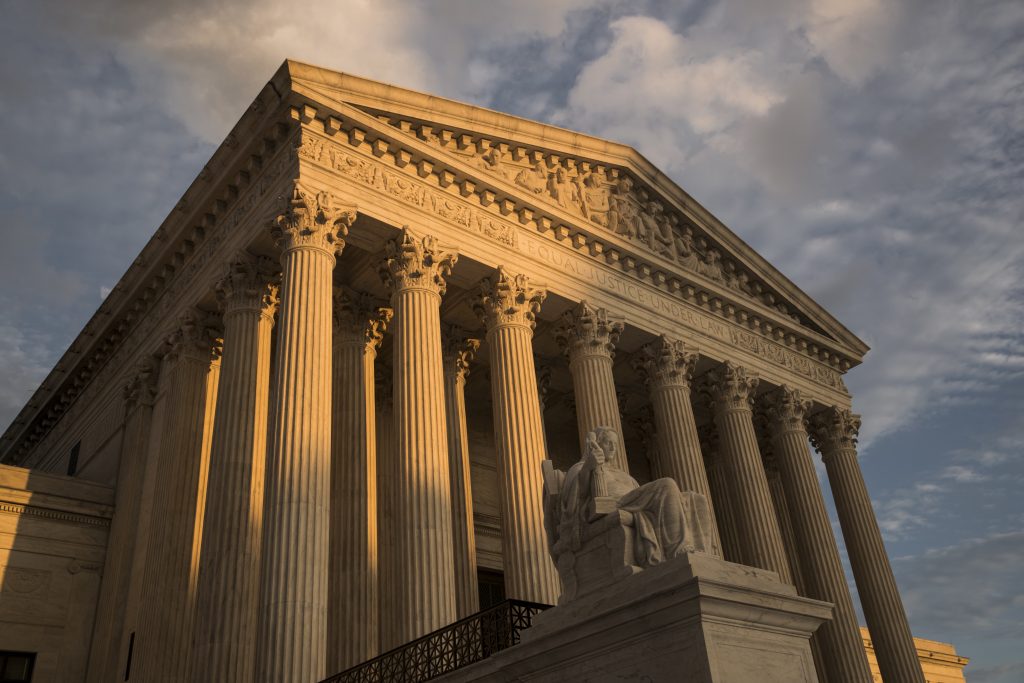Supreme Court takes a technological step forward
By: Associated Press//November 10, 2017//

By MARK SHERMAN
Associated Press
WASHINGTON (AP) — Slowly but surely, the Supreme Court is entering the 21st century. The court is making new legal filings available online starting Monday, years behind the rest of the federal court system.
Can livestreamed audio of arguments and even televised sessions be far behind? Yes, they can.
But advocates of court openness will take what they can get for now, especially because the Supreme Court will not charge for documents. The federal courts’ PACER system does charge fees.
“Though the Supreme Court has moved glacially to join the rest of the judiciary in permitting online filing, that’s better than not at all, and the institution should be commended for creating an e-filing system that, unlike PACER, will be free and easily accessible to the public,” said Gabe Roth, executive director of Fix the Court.
Over the years, the justices have at times shown a glancing familiarity with technology. Some carry computer tablets with high-court briefs loaded on them. But notes between justices are routinely sent on paper, definitely not by email.
Chief Justice John Roberts himself noted a few years back that the court stuck with pneumatic tubes to transmit newly released opinions from the courtroom to reporters waiting one floor below until 1971, long after that technology’s heyday.
Roberts said that it’s appropriate for courts “to be late to the harvest of American ingenuity” because their primary role is to resolve disputes fairly.
Many Supreme Court legal briefs already are available online and can be had free of charge from several sources.
Scotusblog.com obtains and posts many of them, along with opinions. The Justice Department has an easily accessible archive of its extensive high court filings on its website, and the American Bar Association posts briefs in the 70 to 80 cases the court agrees to hear each term.
But the public may not know to look elsewhere. When the justices issued their highly anticipated decision upholding President Barack Obama’s health care overhaul in 2012, the court’s website was overwhelmed.
It, too, has recently been overhauled to make it easier for the public to use.
The Supreme Court changes come amid criticism deeming the PACER system outmoded and unfair.
“The PACER system used by the lower federal courts is hopelessly outdated and cumbersome. And, to add insult to injury, the PACER system charges people fees to access court records that should be made freely available,” said Deepak Gupta, the lead attorney in a class-action lawsuit challenging PACER fees.
The judiciary says the fees provide the only money to pay for the system.
The cost to users was just one among several reasons the court chose not to join the PACER system, court spokeswoman Kathy Arberg said.
“The court elected to design its system in-house so that it would have the capability to customize and continuously update to meet the distinctive needs of the court and counsel,” Arberg said.
Until now, lawyers have not been required to submit their filings to the court electronically. Beginning Monday, those documents should appear quickly on the court’s website. People who can’t afford to pay court costs will be allowed to file paper copies, which Supreme Court employees will scan and post online.
Not everything is changing. Lawyers will still be required to submit up to 40 paper copies of every brief. Also remaining will be the court’s color-coding system used to distinguish types of briefs.
There’s no timetable for electronic filings to supplant paper as the official court record.
And there’s also no expectation that the justices will drop their prohibition on cameras in the courtroom anytime soon.
Justice Sonia Sotomayor, who once sounded open to cameras, recently told a New York audience that cameras might draw attention away from the exchanges that take place during arguments.
The Supreme Court also refuses to livestream audio of its arguments, even as the federal appeals court just down Capitol Hill recently decided to allow live audio broadcasts of its hearings. The high court posts transcripts within hours of its arguments, but doesn’t release the audio for days.
Legal News
- State Bar leaders remain deeply divided over special purpose trust
- Former Wisconsin college chancellor fired over porn career is fighting to keep his faculty post
- Pecker says he pledged to be Trump campaign’s ‘eyes and ears’ during 2016 race
- A conservative quest to limit diversity programs gains momentum in states
- Wisconsin prison inmate pleads not guilty to killing cellmate
- Waukesha man sentenced to 30 years for Sex Trafficking
- 12-year-old shot in Milwaukee Wednesday with ‘serious injuries’
- Milwaukee man convicted of laundering proceeds of business email compromise fraud schemes
- Giuliani, Meadows among 18 indicted in Arizona fake electors case
- Some State Bar diversity participants walk away from program
- Wisconsin court issues arrest warrant ‘in error’ for Minocqua Brewing owner
- Iranian nationals charged cyber campaign targeting U.S. Companies
WLJ People
- Power 30 Personal Injury Attorneys – Russell Nicolet
- Power 30 Personal Injury Attorneys – Benjamin Nicolet
- Power 30 Personal Injury Attorneys – Dustin T. Woehl
- Power 30 Personal Injury Attorneys – Katherine Metzger
- Power 30 Personal Injury Attorneys – Joseph Ryan
- Power 30 Personal Injury Attorneys – James M. Ryan
- Power 30 Personal Injury Attorneys – Dana Wachs
- Power 30 Personal Injury Attorneys – Mark L. Thomsen
- Power 30 Personal Injury Attorneys – Matthew Lein
- Power 30 Personal Injury Attorneys – Jeffrey A. Pitman
- Power 30 Personal Injury Attorneys – William Pemberton
- Power 30 Personal Injury Attorneys – Howard S. Sicula











